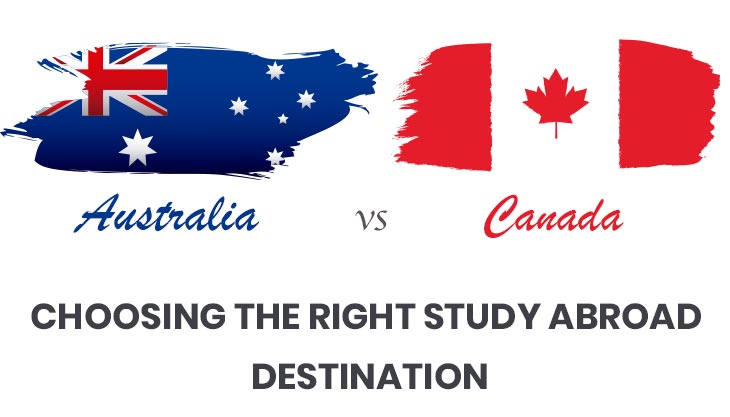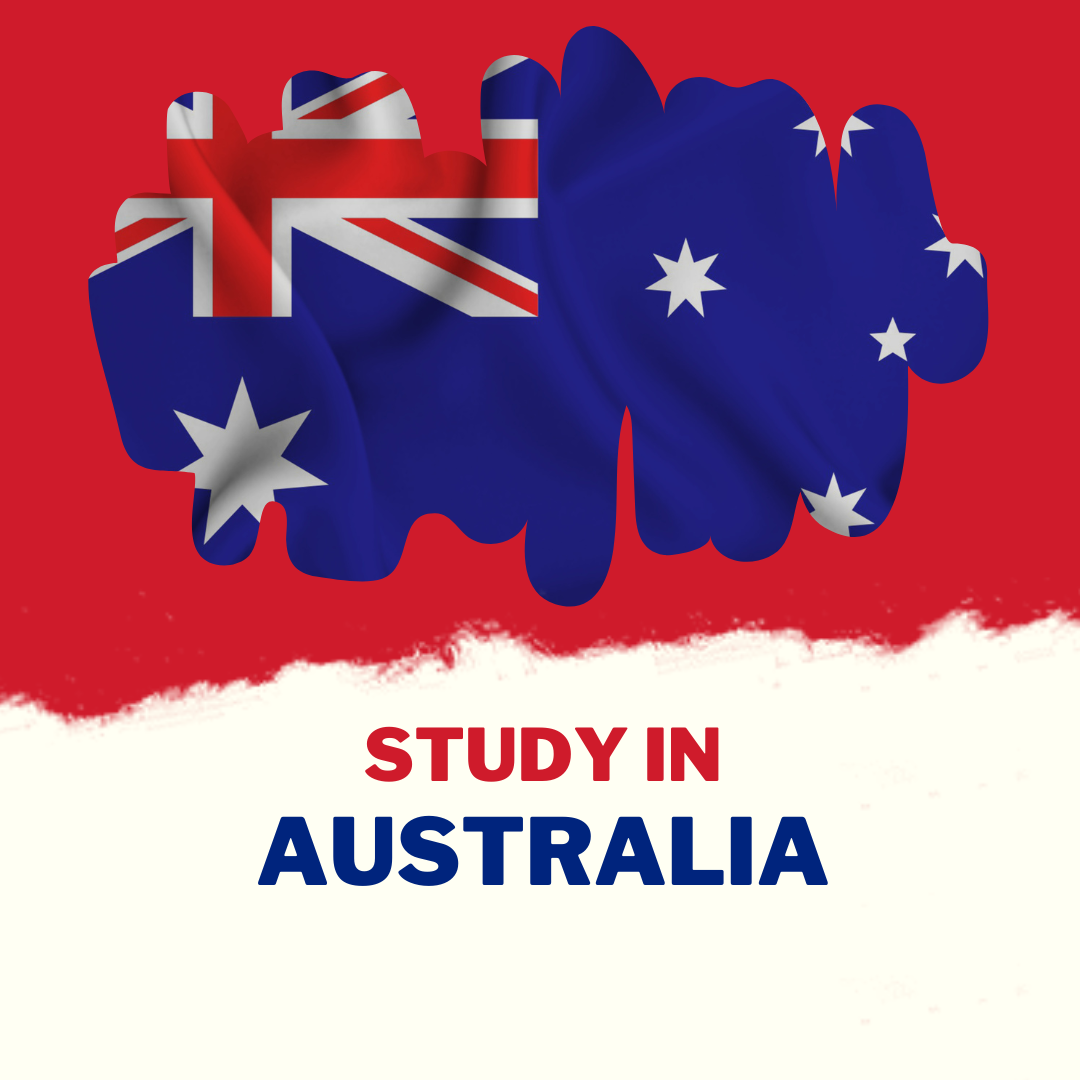INTRODUCTION
In the last several years, Australia and Canada have emerged to top the charts in the Study Abroad destinations, now welcoming thousands of international students each year. Both offer benefits in terms of excellent academics, a vibrant culture, and a great overall standard of living. To ensure that you can select wisely, the Hurray Overseas Education Consultants have come up with a comparison of the two countries and the things they offer so that you can reach a decision.
In this blog post, we will break down and compare the two countries, based on some of the main concerns students will consider when choosing a Study Abroad destination. In having all the information in one place, you will be equipped to make the decision that works best for you!
Top Universities
Both countries are home to universities which rank among the world’s top 50-150.
Australia: Each of Australia’s Top 5 universities falls within the world’s top 50 – a tribute to its efforts to develop as an academic hub. Australian National University comes in 1st with a global rank of 29, followed by the University of Melbourne in 38th place, the University of Sydney in 42nd, University of New South Wales in 43rd, and the University of Queensland in 47th.
Canada: Canada is home to several excellent universities as well. It's top 5 include the University of Toronto, ranked 29th, McGill University, ranked 35th, University of British Columbia, ranked 51st, University of Montreal, ranked 137th, and McMaster University, ranked 147th.
To learn more about each of these universities, check out our blog posts: Top 5 Universities for International Students: Australia and Top 5 Universities for International Students: Canada.
Top Subjects
The following are the most popular subjects for which international students seek to Study Abroad in Australia and Canada. Some of these subjects will overlap, owing to their general popularity the world over.
Australia: The subjects that are in greatest demand among international students include Business (i.e. MBA), Medicine (including Dentistry), Accounting, Creative Arts and Design, and Education.
Canada: The subjects that are in greatest demand among international students include Business (i.e. MBA), Computer Science and Information Technology, Engineering (including Engineering management), Physical and Earth Sciences (with an emphasis on renewable energy), and Forestry and Agricultural Sciences.
Admissions
Universities in both Australia and in Canada have competitive entry, and the minimum requirements are high.
Australia: Indian 3-year Bachelor’s Degrees i.e. BA, BSc, or BCom, are generally accepted for consideration for admission to postgraduate programmes in Australia. However, certain academically-advanced programmes would require the candidate to have an Honours degree, i.e. involving the 3-year Bachelors with an additional 4th year. Each university/programme sets its own minimum required score.
Canada: Indian 3-year Bachelor’s Degrees are usually not accepted by Canadian universities – a postgraduate diploma/Master’s degree is often required in addition to a Bachelor’s, to qualify for Master’s programmes. However, graduate diploma programmes, as well as certain Master’s programmes, may consider the Indian 3-year Bachelor’s, on a case-by-case basis. Most universities/programmes stipulate a minimum required GPA, which usually begins at 3.0 on a 4.0-point scale.
Both Australia and Canada require international candidates to submit proof of English language proficiency. The preferred test by both countries is IELTS, with the minimum average score usually set at 6.5, with individual band scores of at least 6.0.
Cost of Study
Australia: Compared to other top countries, Australia has a relatively lower rate of tuition fee. The tuition fee for most Master’s programmes ranges between 20-37000 AUD per annum, varying as per factors such as the area of study or university. At the current rate of conversion, this would amount to about 10-18,00,000 INR.
As stipulated by the Student Visa requirements, the funds needed to live and Study in Australia is set at 20-25000 AUD per annum, with location-based variations among metropolitan and regional areas. This amounts to approximately 10-12,00,000 INR (at current rates).
Canada: Canada’s rate of tuition fee falls lower still. The tuition fee for a Master’s programme ranges from 16000-30000 CAD per annum, with most averaging at 21-22000 CAD. At the current rate of conversion, this would amount to about 11-12,00,000 INR on average, going up to around 16,00,000 INR.
In terms of cost of living, living in Toronto or Ontario i.e. major metropolitan areas would cost about 14-16000 CAD per annum. This amounts to approximately 7-9,00,000 INR (at current rates).
Duration of course and Semester system
Australia: A Masters by coursework programme is typical of 1.5-2 years’ duration.
Semester 1 commences in February-March, or as late as April in certain universities, while Semester 2 commences in July-August, or as late as September.
Canada: A Master’s programme is typically of 1-2 years’ duration.
The semester system is similar to that in the UK, where Fall semester commences in September, and Winter semester commences in January, with certain universities having an additional Summer semester, which commences in April-May.
Credit and Grading system
Australia: For each course of study, you earn a credit value. Credits reflect the number of hours per week you are expected to study a certain subject. In Australian universities, each subject usually has a value between 6 and 8. Each university decides how many subjects students are allowed to choose for each semester. 96 credits are required to complete a postgraduate degree, you would need.
Most Australian universities use an alphabet-based grading system. GPA using a 7-point scale is published on the transcript.
|
Percentage |
Grade |
GPA |
|
80% and above |
HD High Distinction |
7 |
|
70% – 79% |
D Distinction |
6-6.99 |
|
60% – 69% |
C Credit |
5-5.99 |
|
50% – 59% |
P Pass |
4-4.99 |
|
49% and below |
F Fail |
0 |
Canada: The credit and grading system varies based on the State in which the university is located. The grading system involves a combination of percentage, GPA with different number scales, and letter grades (A+, A, B etc.)
Work while studying
Both countries allow international students to work during the duration of their academic programmes, subject to certain regulations and criteria.
Australia: The Australian Student Visa (Subclass 500) permits international students studying in Australia to undertake up to 40 hours of work per fortnight during the working semester, and unlimited hours of work during the holiday periods.
Canada: The Canadian Student Permit must carry the stipulation that permits you to work on-campus i.e. in one of the buildings/for an employer associated with the university, with this stipulation subject to certain criteria. If you are required to work co-op or as an intern as per the demands of your programme, you will have to apply for an additional work permit.
Post-study work opportunities
Australia: Introduced in 2013, the Post-Study Work Stream Visa is for recent graduates with a Bachelors, Masters or Doctoral degree awarded by an Australian University. With this visa, the candidate is allowed to remain in the country to live and work for 2-4 years, depending on the qualification level – for instance, a graduate with a Master’s by coursework degree is entitled to stay for 2 years. Following visa expiry, a number of other visa options can be applied for to remain in the country.
Canada: Graduates of eligible institutions/programmes can apply for the Post-Graduation Work Permit (PGWP) which permits foreign nationals to remain in the country for work, following graduation. Ultimately, education and work experience in Canada can qualify a foreign national to gain Permanent Residency (PR) status in Canada.
Bonus: world’s best cities!
According to the QS the Top 10 Cities in the World for higher education for 2020, feature places from Australia and Canada.
Canada’s Montreal has been ranked 6th in the world, with benefits such as having one of the lowest costs of living compared to major cities around the world, and a culturally and linguistically diverse population. The Francophone city is also home to Canada’s second-best university, McGill. You can opt for Study In Canada
On the other hand, Australia is home to not one, but two of the world’s best cities for higher education. Sydney, ranked 9th, is considered the cultural hub of the country, Melbourne, ranked 3rd, was dubbed the World’s most liveable city for 7 years’ running and is considered especially prominent in the QS ranking factor of employer activity, with several major multinational corporations setting up shop here.
As you have probably noted, each country has its benefits as a Study Abroad destination – Australia is home to some of the world’s best universities, Canada has the benefit of lower overall costs of study and living, and both provide international students with post-study work opportunities.
If you are confused – worry not! The Hurray Overseas Education Counselling team is ready to work with you, helping you to choose the country, university, programme, and so on, that works best for you and your career goals. To book your one-on-one appointment with us, reach out via email:overseaseducation@hurrayeductech.com or phone: 8971357928, for more details. You can also check out our informative blogs on Australia in our Study In Australia Blog section and Canada in Study In Canada Blog section.











Post Comments